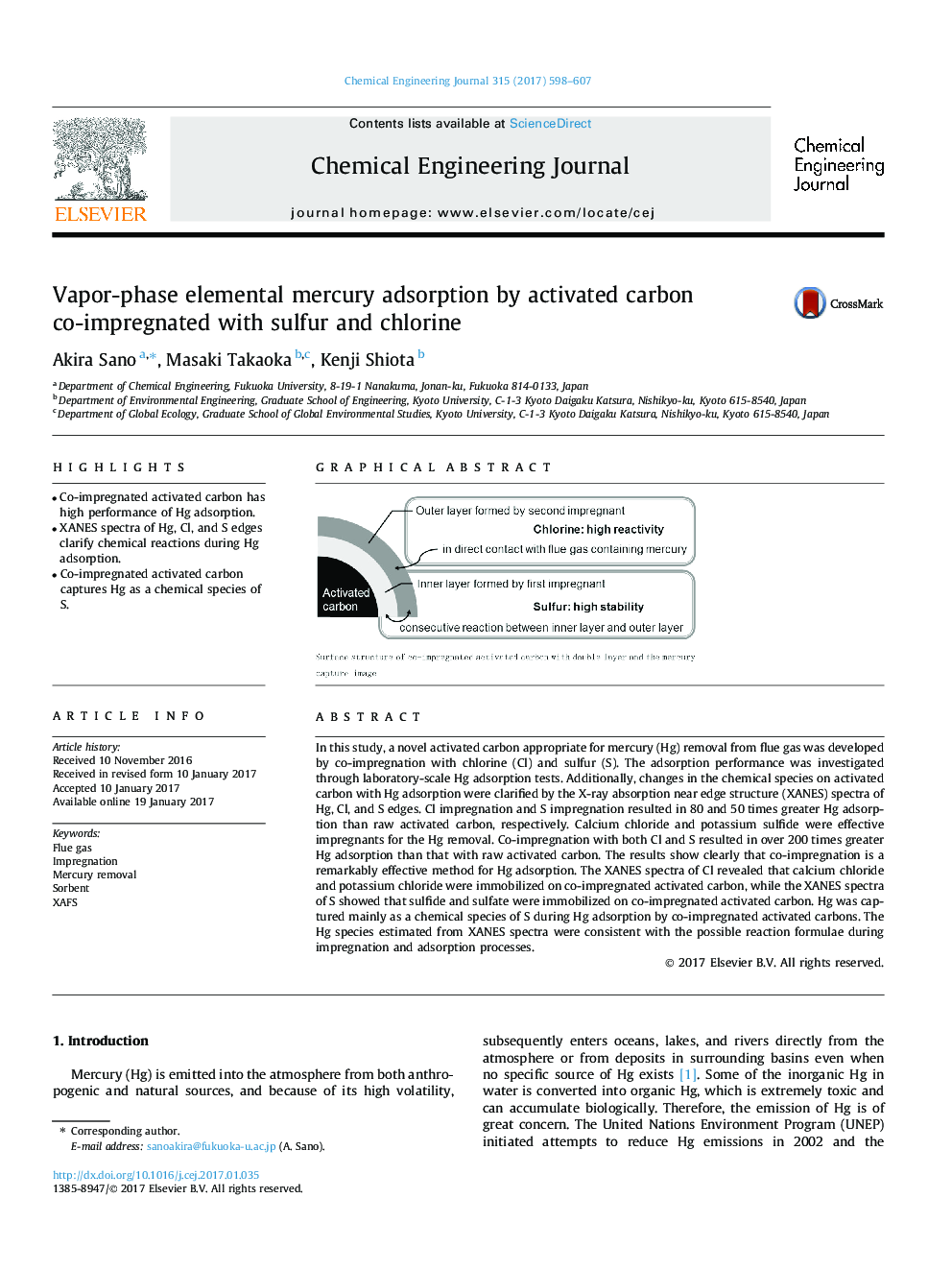| کد مقاله | کد نشریه | سال انتشار | مقاله انگلیسی | نسخه تمام متن |
|---|---|---|---|---|
| 6466350 | 1422963 | 2017 | 10 صفحه PDF | دانلود رایگان |
- Co-impregnated activated carbon has high performance of Hg adsorption.
- XANES spectra of Hg, Cl, and S edges clarify chemical reactions during Hg adsorption.
- Co-impregnated activated carbon captures Hg as a chemical species of S.
In this study, a novel activated carbon appropriate for mercury (Hg) removal from flue gas was developed by co-impregnation with chlorine (Cl) and sulfur (S). The adsorption performance was investigated through laboratory-scale Hg adsorption tests. Additionally, changes in the chemical species on activated carbon with Hg adsorption were clarified by the X-ray absorption near edge structure (XANES) spectra of Hg, Cl, and S edges. Cl impregnation and S impregnation resulted in 80 and 50Â times greater Hg adsorption than raw activated carbon, respectively. Calcium chloride and potassium sulfide were effective impregnants for the Hg removal. Co-impregnation with both Cl and S resulted in over 200Â times greater Hg adsorption than that with raw activated carbon. The results show clearly that co-impregnation is a remarkably effective method for Hg adsorption. The XANES spectra of Cl revealed that calcium chloride and potassium chloride were immobilized on co-impregnated activated carbon, while the XANES spectra of S showed that sulfide and sulfate were immobilized on co-impregnated activated carbon. Hg was captured mainly as a chemical species of S during Hg adsorption by co-impregnated activated carbons. The Hg species estimated from XANES spectra were consistent with the possible reaction formulae during impregnation and adsorption processes.
85
Journal: Chemical Engineering Journal - Volume 315, 1 May 2017, Pages 598-607
